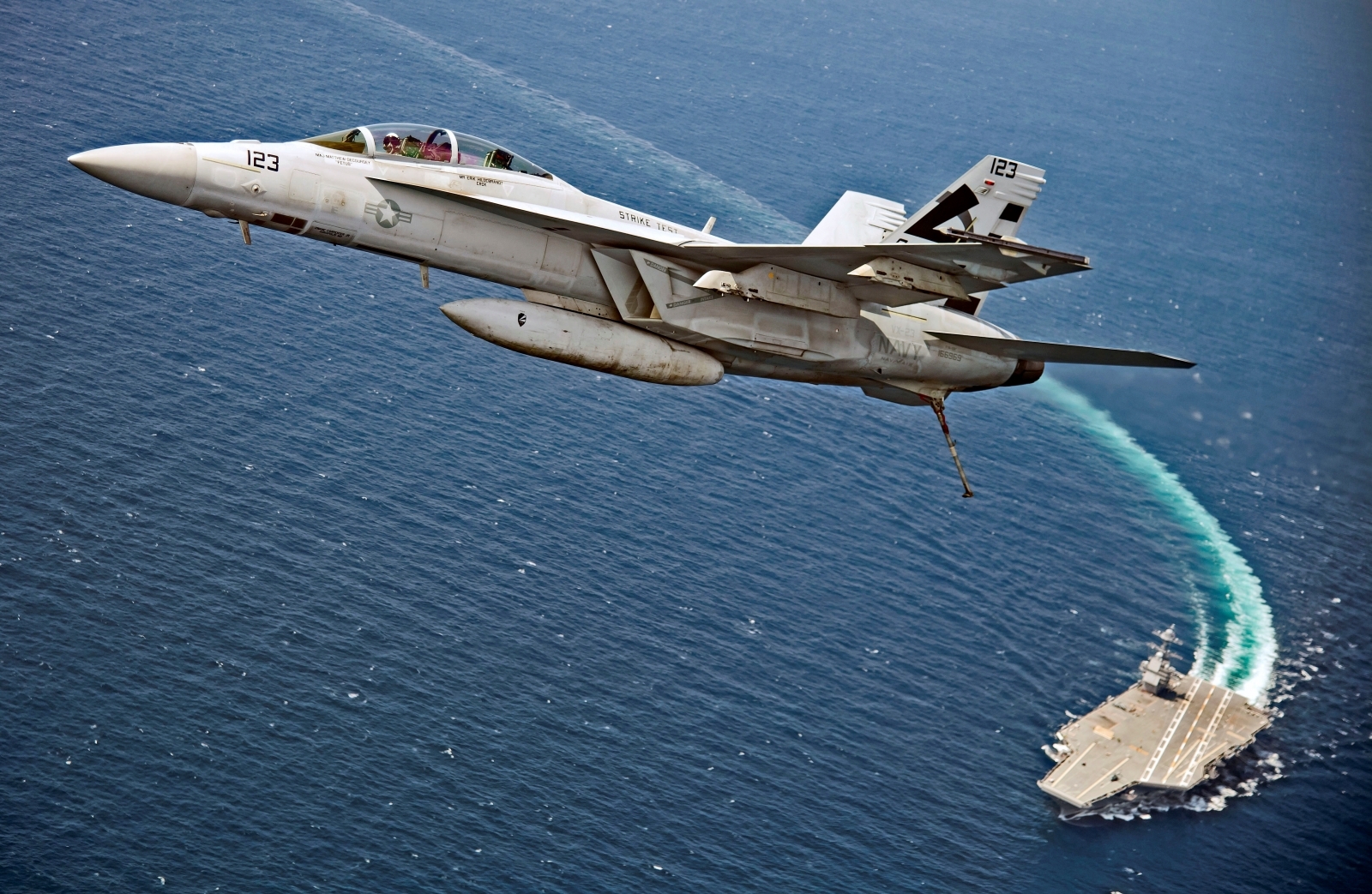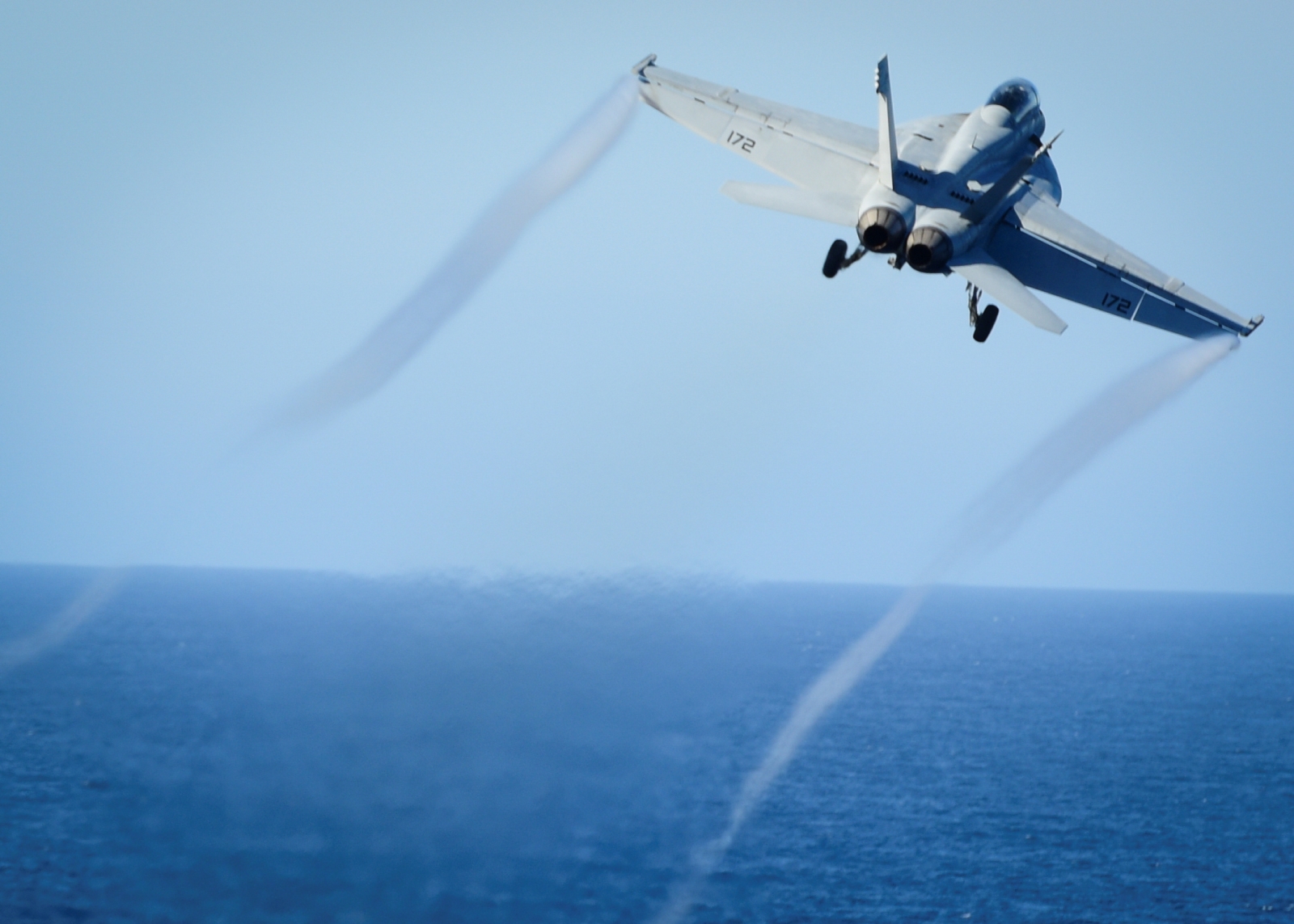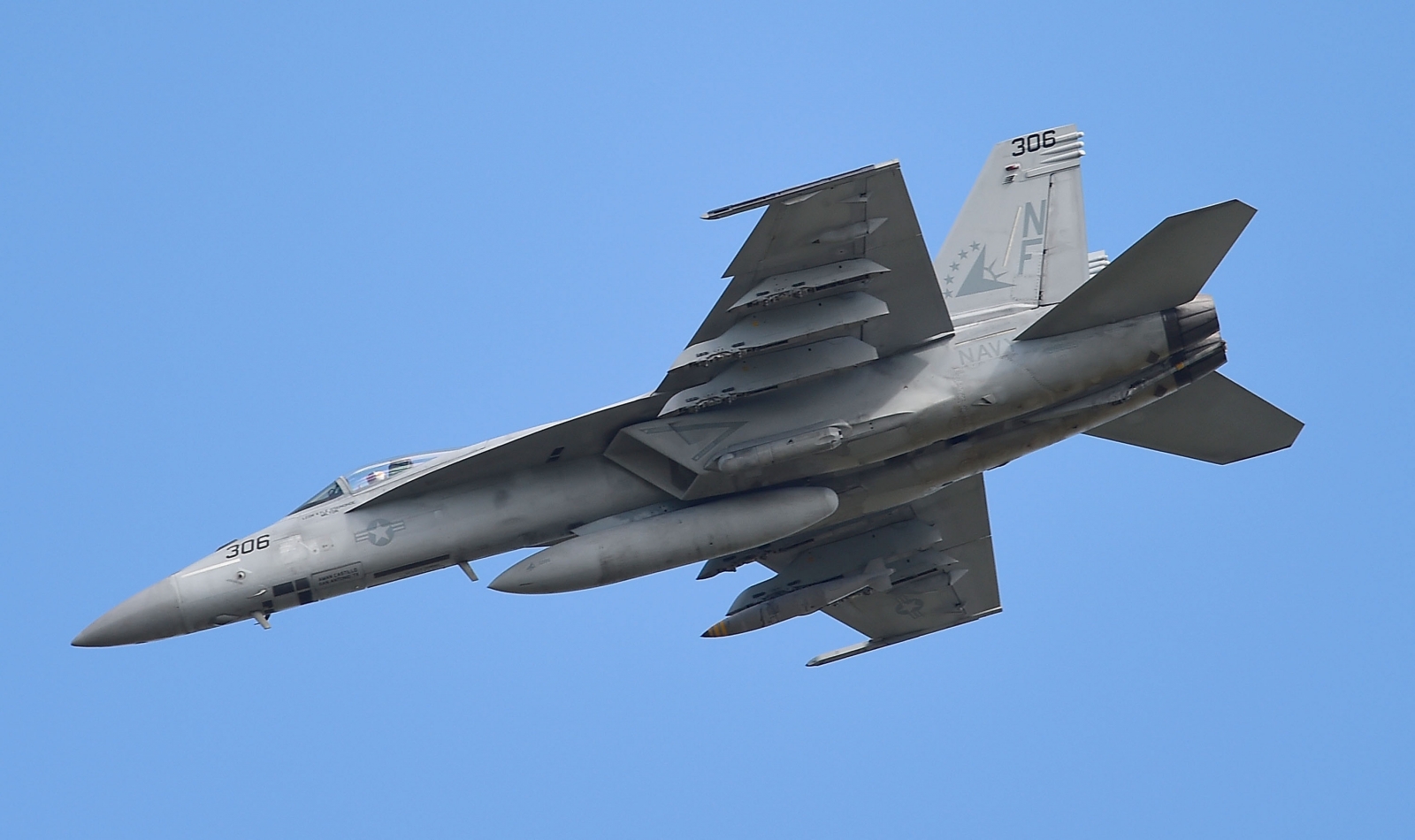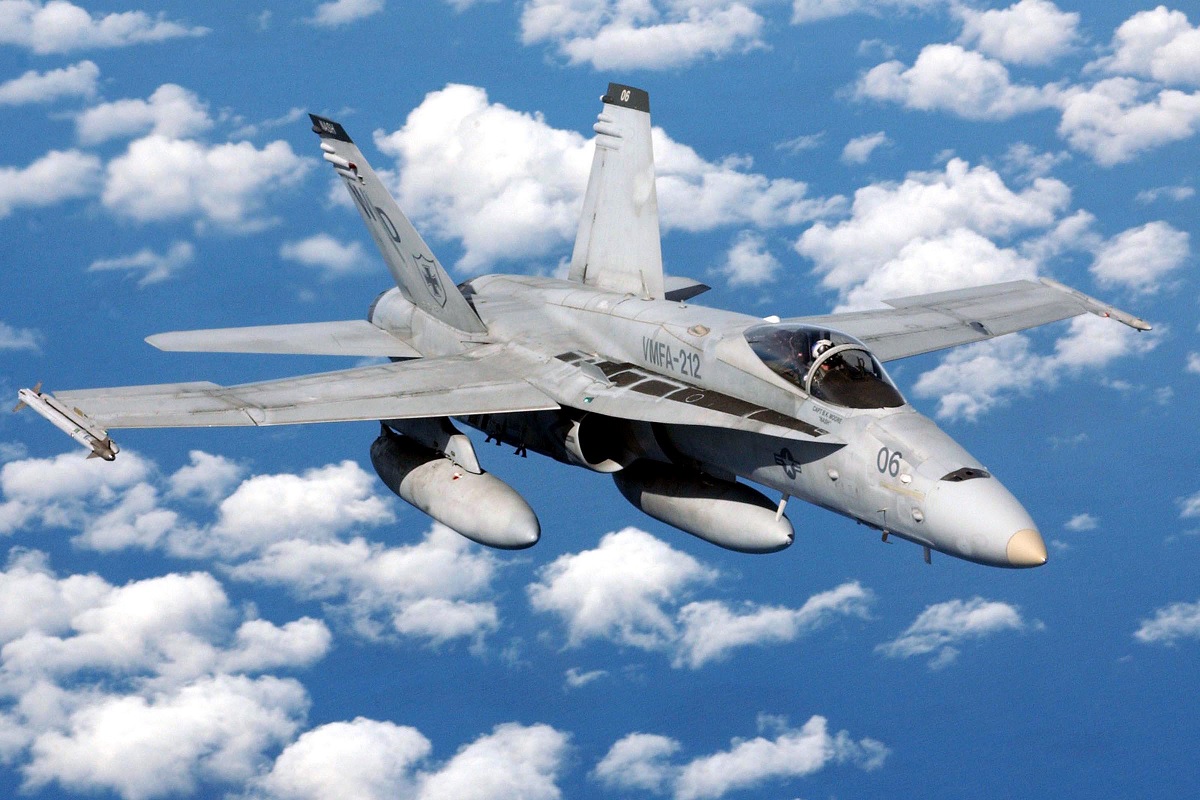US Navy's Super Hornet will get longer range, take down missiles in the air with upcoming updates
New fuel tanks are expected to give the Super Hornets an additional 300 miles of flight and fight.






US Navy's primary fighter the F/A-18E/F Super Hornet is set to receive an upgrade that will give it longer legs in the form of brand new fuel tanks. This development will allow the aircraft to fly and fight farther than ever before.
The move to extend the flight range of the Super Hornet is being done to reduce the possibilities of attacks from enemy missiles reaching American carriers and destroyers. A report by Popular Mechanics (PM) notes that the improved efficiency and range achieved by Chinese missiles has led the US Navy to want a fighter that can destroy incoming missiles before they do any damage to American flat-tops.
Boeing, creators of the Super Hornet, was awarded a $219m (£156m) contract for the "design, development, test and integration of the conformal fuel tank (CFT) in support of the F/A-18" on 14 February, according to a release. Work on the tanks is expected to be completed by 2022, notes the PM report.
However, the CFT design for fuel tanks is not new. The report mentions that F-15E Strike Eagles was the first to use such tanks. Unlike the usual "drop tanks" that are normally used to increase the range of a fighter, CFTs are designed to be a semi-permanent part of the fighter's fuselage.
Range extension was normally done by adding a drop tank to a fighter. These tanks are placed directly below the fuselage and look like large bombs. They are unwieldy, heavy and added to a jet's radar signal, so they are used only when absolutely needed. One advantage with a drop tank, however, is that it can be used as a bomb in emergencies.
Because of its noisy on radar screen nature, stealth aircraft could not make use of them, in fact, they have to be off-loaded before the aircraft reaches radar range.
CFTs, however, stay close to the fuselage by on either side of the wings, and are highly aerodynamic and do not cause any radar noise, explains the report.
Countries like China and Russia have been producing Anti Ship Ballistic Missiles (ASBM) which are designed specifically to attack aircraft carriers. They have only a medium range of attack, which in the case of the Chinese DF-21D is reportedly around 1,100 miles.
Ballistic missiles are known for their trajectory which is straight up to the edge of the atmosphere and then rapid re-entry at a rate that is difficult to intercept. While not entirely impossible, this means any position guarded by DF-21D missiles is a no-go zone with a 1,100-mile radius for American carriers. That is pretty much the entire Chinese coastline, reports Popular Mechanics.
To fight these ASBMs, a carrier has to be well within the range of these missiles because as of now the Super Hornet has a fully loaded fighting range of only 500 miles. CFTs are expected to add an additional 300 miles to the Super Hornet's range.





















